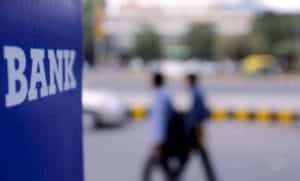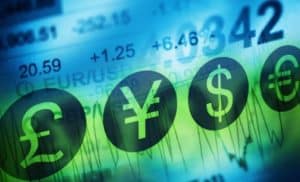Table of Contents
Inflation in vegetables crashed from 26.1% in August to just 3.4% in September but inflation in cereals remained sticky at 11% and the pace of price rise in pulses accelerated from 13% in August to 16.4% last month. File | Photo Credit: Sushil Kumar Verma
India’s retail inflation eased from 6.83% in August to 5.02% in September, breaking a two-month streak over the tolerance threshold of the Reserve Bank of India (RBI), with the rise in food prices easing to 6.6% from almost 10%.
Rural inflation stood at 5.33% in September, compared to 7% in August, while the price rise faced by urban consumers moderated more sharply to 4.65% last month from 6.6% in August.
Amid a mixed trend in food items, inflation in vegetables crashed from 26.1% in August to just 3.4% in September. But inflation in cereals remained sticky at 11% and the pace of price rise in pulses accelerated from 13% in August to 16.4% last month.
Significance of Retail Inflation
Retail inflation is a crucial economic indicator that measures the rate at which the general level of prices for goods and services is rising and, consequently, purchasing power is falling. It impacts individuals, businesses, and the overall economy. Understanding retail inflation helps policymakers make informed decisions on monetary policy, interest rates, and fiscal measures.
Features of India’s Retail Inflation
- Inflation in vegetables significantly decreased from 26.1% in August to just 3.4% in September.
- Inflation in cereals remained high at 11%.
- Pulses experienced an increased pace of price rise, reaching 16.4% in September from 13% in August.
- Rural inflation lowered to 5.33% in September, while urban inflation dropped to 4.65%.
Objectives of Controlling Inflation
The primary objectives of controlling inflation are:
- Stabilizing prices and ensuring price stability
- Maintaining the purchasing power of a currency
- Controlling inflationary expectations
- Promoting a favorable business and investment environment
Effects of Retail Inflation
The effects of retail inflation can vary and impact different stakeholders:
- Decreased purchasing power for consumers as prices rise
- Increased production costs for businesses, leading to reduced profitability
- Potential wage pressure as employees seek higher pay to compensate for rising prices
- Impacts borrowing costs, interest rates, and lending policies
- Affects investment decisions and economic growth
Pros and Cons of Retail Inflation
While retail inflation can have both positive and negative consequences, some pros and cons include:
- Pros: Encourages saving, discourages excessive borrowing, and stimulates government policies to control inflation
- Cons: Decreases purchasing power, erodes savings, and poses challenges for businesses in planning and decision-making
Fun Fact about Retail Inflation
Did you know that countries with high inflation rates often experience economic instability and challenges in attracting foreign investments? Controlling inflation is essential for maintaining a stable economy.
Mutiple Choice Questions
1. What was the retail inflation rate in India in September?
a) 6.83%
b) 5.02%
c) 7.4%
d) 4.3%
Explanation: The retail inflation rate in India decreased from 6.83% in August to 5.02% in September, according to the information provided. (source: The Hindu)
2. What was the inflation rate in vegetables in September?
a) 26.1%
b) 3.4%
c) 11%
d) 16.4%
Explanation: The inflation rate in vegetables dropped from 26.1% in August to 3.4% in September, as mentioned in the passage.
3. What was the inflation rate in cereals in September?
a) 26.1%
b) 3.4%
c) 11%
d) 16.4%
Explanation: The inflation rate in cereals remained at 11% in September, as stated in the information.
4. What was the inflation rate in pulses in September?
a) 26.1%
b) 3.4%
c) 11%
d) 16.4%
Explanation: The inflation rate in pulses increased from 13% in August to 16.4% in September, according to the passage.
5. What was the inflation rate in fuel and light prices for households in September?
a) 4.3%
b) -0.1%
c) 6.6%
d) 7.4%
Explanation: The inflation rate in fuel and light prices for households decreased from 4.3% in August to -0.1% in September due to LPG rate cuts, as mentioned in the passage.
6. What is the average inflation projection for the current quarter by the MPC?
a) 5.6%
b) 6.2%
c) 6.4%
d) 5.4%
Explanation: The MPC expects inflation to average 5.6% in the current quarter, as stated in the information.
7. Which protein source experienced higher inflation in September?
a) Milk
b) Eggs
c) Meat and fish
d) Spices
Explanation: Eggs had higher inflation of 6.4% in September, while milk inflation eased slightly to 6.9%, as mentioned in the passage.
8. Which state had the highest inflation rate?
a) Rajasthan
b) Haryana
c) Chhatisgarh
d) Tamil Nadu
Explanation: Rajasthan and Haryana recorded the highest inflation rate at 6.5%, according to the information provided.
9. Which sector still experienced rising costs in September?
a) Food
b) Health
c) Personal care
d) Airlines and hospitality
Explanation: Costs of services like health and personal care were still rising in September, as mentioned in the passage.
10. What factors might impact inflation in the future?
a) Kharif harvest and El-Niño effect
b) Israel-Palestine crisis
c) Rising airline and hospitality costs
d) All of the above
Explanation: According to Madan Sabnavis, the chief economist at Bank of Baroda, factors such as the Kharif harvest, El-Niño effect, and the Israel-Palestine crisis could impact inflation going forward, as stated in the passage.
Brief Summary | UPSC – IAS
India’s retail inflation dropped from 6.83% in August to 5.02% in September, falling below the Reserve Bank of India’s tolerance threshold. Food prices rose at a slower rate, with inflation in vegetables decreasing from 26.1% in August to 3.4% in September. However, inflation in cereals remained high at 11%, while the price of pulses increased from 13% to 16.4%. The drop in inflation was attributed to the reduction in LPG cylinder prices and base effects from the previous year. Moving forward, factors such as the Kharif harvest, the El-Niño effect, and the Israel-Palestine crisis may impact inflation rates.

